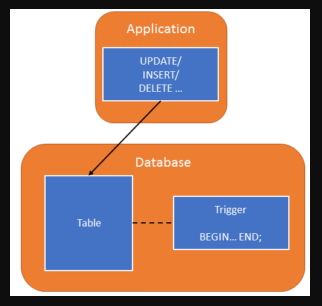Understanding SQL Plan Baselines in Oracle Database
SQL Plan Baseline is the feature in Oracle started from Database 11g that helps to prevent repeatedly used SQL statements from regressing because a newly generated execution plan is less effective than what was originally in the library cache. Read on to learn more…
The relationship between the SMB, Plan History and Plan Baseline
Before a plan in the SQL Plan Baseline can be used or selected by the optimizer, the SQL Baseline must be initialized with at least one accepted plan for the repeatable statements being run. The two activities that populate the SQL Plan Baselines are capturing and evolving.
Capturing is the initial load of plans into the baseline, evolving is the evaluation of new plans in the SQL History to ensure they will not cause the statement to regress and then adding them to the SQL Baseline.
Capturing SQL Plan Baselines
During the capture phase, Oracle maintains a log of the SQL ID for statements executed against the database. If a statement is parsed or executed after it was initially logged, it is considered a repeatable statement. For each of these statements, the SQL History is created and new plans (if generated) are added to it. There are two ways to initiate the capture, automatically and manually.
To do an automatic load, change the OPTIMIZER_CAPTURE_SQL_PLAN_BASELINES parameter to TRUE rather than it’s default of FALSE. This is a dynamic parameter, so the capture process can be quickly started and then stopped if necessary. During automatic capture, the first plan generated for any statement is flagged as accepted and placed into both the SQL History and the SQL Baseline.
Any subsequent execution plans are placed only in the history.
Manual loading of the initial SQL Baseline is accomplished by using the DBMS_SPM
package supplied with Oracle. There are two functions that load SQL plans.
These are LOAD_PLANS_FROM_SQLSET and LOAD_PLANS_FROM CURSOR_CACHE. Any plans that are manually loaded are placed into the SQL Plan Baseline.
DBMS_SPM also has a procedure that will migrate stored outlines that may already exist for any of the high-load statements into the SQL Plan Baseline. This function is called MIGRATE_STORED_OUTLINE and was introduced as a part of Oracle Database 11g R2.
This means, the work done previously to create stored outlines can now
be used to initially seed the SQL Plan Baselines, which is a nice feature.
For more details on running these procedures, refer to DBMS_SPM
Documentation.
Evolving SQL Plan Baselines
If the optimizer generates a new plan for a repeated SQL statement, it is
automatically added to the SQL Plan History. However, it is not automatically
added to the baseline. In order for a new plan to be added to the SQL Plan Baseline, it must be "evolved" or verified first. Once again, there are several
methods for evolving a plan from the history into the baseline.
The Automatic SQL Tuning job (also new in 11g) that is run as an automatic task during the maintenance window will automatically verify plans that have been added into the SQL Plan History. Verification simply means that the plans are checked to ensure that the new plan will not result in a performance degradation or regression.
This is an out-of-the-box feature that focuses on high-load statements
because these are the statements that the Automatic SQL Tuning job selects to
analyze.
In addition, manually running the SQL Tuning Advisor may result in plans being added to the SQL Plan Baseline.
If the SQL Tuning Advisor yields a recommendation to create and use a SQL Profile, if that profile is accepted, the corresponding plan is automatically added to the baseline.
The
ALTER_SQL_PLAN_BASELINE function of DBMS_SPM can be used to change the status of plans in the SQL History to Accepted, which in turn moves them into the SQL Baseline and the EVOLVE_SQL_PLAN_BASELINE function of the DBMS_SPM package can be used to see which plans have been evolved.
Fixing SQL Plan Baselines
Another option that can be used with SQL Plan Baselines is to mark one (or more)
specific plan as a fixed baseline. If a fixed plan exists in a baseline, the
optimizer will give priority to that fixed plan, even if a better, lower cost
plan is available.
This would enable a DBA to essentially guarantee (or at least make most likely) a very specific plan to be used by optimizer. However, there are some factors to be
aware of, if this approach is used. First, the optimizer will not add new
plans to the history if there is a fixed baseline and the
EVOLVE_SQL_PLAN_BASELINE function will not evolve plans either. New plans in
the SQL Plan Baseline would have to be added by manually loading them from the
SQL Cache or a SQL Tuning set. Second, there is a possibility that a better
execution plan will be ignored because it has not been marked as fixed.
A plan can be marked as fixed by using the ALTER_SQL_PLAN_BASELINE function of DBMS_SPM and changing the FIXED attribute to a value of YES.
DBA_SQL_PLAN_BASELINES Dictionary View
This is the main dictionary view used to see information about the SQL Plan Baselines.
There are several columns that are of particular interest:
Column | Value | Meaning |
ORIGIN | AUTO-CAPTURE | Evolved |
MANUAL-LOAD | Evolved via | |
MANUAL-SQLTUNE | Evolved as | |
AUTO-SQLTUNE | Evolved as | |
ENABLED | YES | The plan is |
NO | The plan | |
ACCEPTED | YES | The plan |
NO | The plan | |
FIXED | YES | The plan |
NO | The plan is |
Selecting SQL Baseline Plans
Once SQL Plan Baselines are in place, additional steps are taken to evaluate whether or not an execution plan from the SQL Plan Baseline should be used for a repeatable statement run in the database. In order for Oracle to replace a generated SQL Plan with a plan from the SQL Plan Baseline, the
OPTIMIZER_USE_SQL_PLAN_BASELINES must be set to TRUE (which is the default value).
For each statement that is run, the following steps take place.
Is OPTIMIZER_USE_SQL_PLAN_BASELINES=TRUE?YES? Is the plan part of the SQL History?YES? Is the plan part of the SQL Baseline?YES? Use the plan generatedNO? Replace with the best SQL Baseline PlanNO? Add the plan to the SQL History and use the best SQL Baseline PlanNO? Use the plan generated
Controlling SQL Baseline Space Usage
The SQL Management Base (SMB) area allocated in the SYSAUX tablespace is controlled by two settings, and an automatic purge activity takes place to remove any plans that have not been used within a designated period of time.
By default, the SMB is limited to no more than 10 percent of the SYSAUX tablespace. This can be adjusted by using the DBMS_SPM.CONFIGURE(‘SPACE_BUDGET_PERCENT’,nn); command.
The value of nn can be from 1percent to 50percent. If the space is exceeded, warnings are generated to the alert log on a weekly basis until the space
issue is resolved by adjusting the percentage, changing the size of SYSAUX, or
plans are purged.
Plans are purged on a weekly basis. By default, any plan that has not been used in 53 weeks will be automatically purged. This is also an adjustable value and is
changed with the DBMS_SPM.CONFIGURE(‘PLAN_RETENTION_WEEKS’,nnn); procedure.
Valid values are from 5 to 523 weeks. The LAST_EXECUTED column of
DBA_SQL_PLAN_BASELINES will indicate which plans might be up for purging in the near future.
In addition, plans can be manually removed from the SMB using the
DBMS_SPM.DROP_SQL_PLAN_BASELINE function.
Wrapping Up
Additional Information on SQL Plan Baselines is available through the website listed above, including how to export/import plans from one database to another using DataPump, and more details on migrating stored outlines into SQL Plan
Baselines.
Overall, SQL Plan Baselines may prove to be a very useful tool for DBAs by providing a benefit that will actually enhance the general stability of SQL performance by avoiding the use of new execution plans that will result in a slower, regressed query result. An additional benefit may be found in reducing the time and effort that DBAs have to spend doing SQL Statement tuning.













